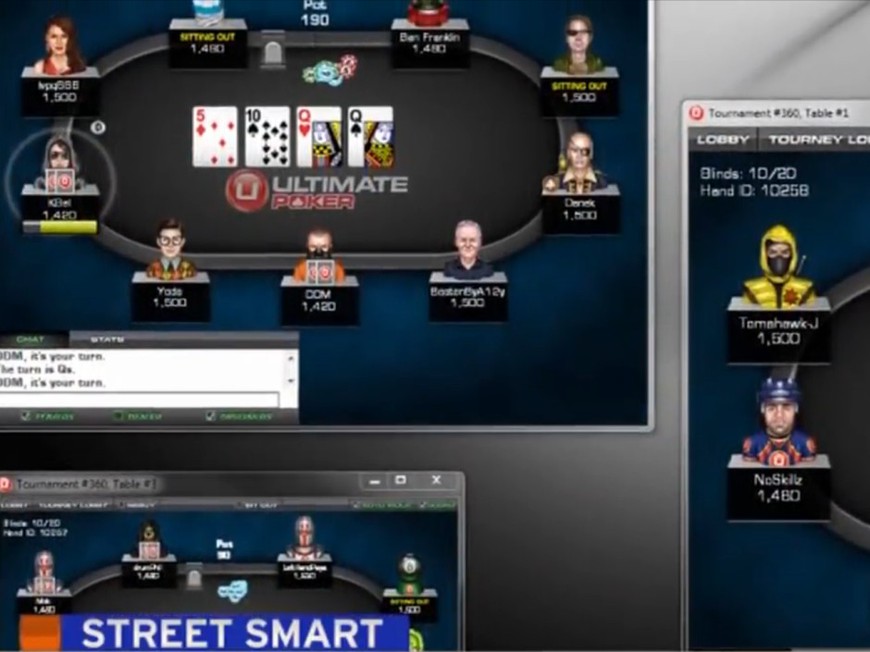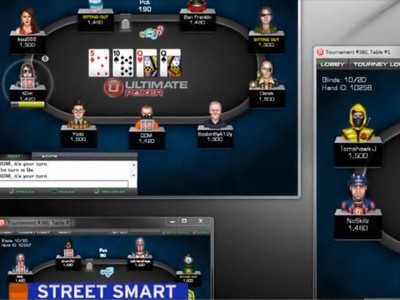

- Preview in Bloomberg interview shows off new Full Tilt-esque avatars and resizable tables.
- Other cosmetic changes made, but layout remains mostly untouched.
Hawk-eyed viewers of a recent Bloomberg TV interview with Ultimate Gaming Co-Founder Tom Breitling will have spotted what is the first glimpse of Ultimate Poker’s next generation poker client.
The biggest visible change from the screen capture, taken from the beginning of the segment, is the large selection of new player avatars. These apparently replace the cartoonish square pictures in use today. They resemble quite closely the style of Full Tilt’s iconic avatars—though Ultimate’s all seem to have the same expression.
The bald eye-patched avatar pictured in the three hole in the screenshot above that bears a striking resemblance to Poker Product Manager Chris Danek—and also serves as his Twitter avatar—suggests that we may see more familiar faces in the collection of avatars in v2.
There is also a new semi-circular bar around the active player, and a yellow power-bar to show their time to act, replacing v1’s the rather garish green box.
The screenshot also demos the new resizable tables, which can apparently be full-screened as well as shrunk small. There is a new menu strip along the top to bring up the lobby, enable automatic top-up, turn off sound and sit out, but otherwise the overall table layout looks mostly untouched, and the deck and chips are the same.
The poker room completed a 90-day field trial over two weeks ago, which lifted them from reporting burdens and allowed them to roll out the new version. Though initially slated to be “days” away, the software is still waiting for the green light from third-party testing.
The only other known addition in v2 is the the new VIP program, “Color UP,” which will have ten different rewards tiers and attribute rake on a “winner takes all” basis.
In a new videocast from Ultimate Poker released earlier today, Terrence Chan and Chris Danek discuss the upcoming version; No new details, but the two describe the process of third-party testing that results in these delays.

